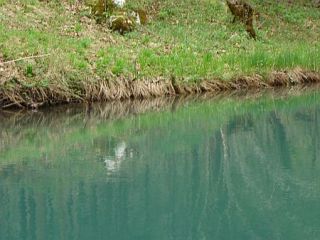
A spectacular meander of the Lahinja River just outside of Gradac in Slovenia’s Bela Krajina region is the site of a storied castle. Even though the building is now in poor shape, its architecture and location give some indication of its past glories.
Built on the location of an older fort, Gradac Castle was first mentioned in the 13th century, and in the years that followed, it changed hands many times, with each of its owners leaving a mark on the building’s architecture. It frequently came under attack from the Turks, who launched offensives from nearby Ottoman-held territories. If that wasn’t enough, much of the castle was destroyed by an earthquake in 1640.
The castle was soon rebuilt and entered a long period of stability under the ownership of the Gusič family of nobles with Croatian roots – an era that lasted more than two centuries. Gradac Castle was unique in having a land registry in the Slovenian language at a time when such documents were almost always written in German or Latin.
In the 17th century, the Gusičs had a magnificent park created along the river next to the castle. Its most remarkable feature was a tree-lined promenade with spruce and plane trees.
The 19th and the 20th centuries saw another succession of owners. Among them was Franz Friedau, who built a foundry in Gradac, bringing the town into the industrial age. A wooden bridge still connects the castle to the area where the foundry once stood.
During World War II, the castle served as a field hospital. After the estate was nationalized by the Communist authorities, the park was neglected. It became overgrown and in the early 1990s, many of the magnificent trees were chopped down. In recent years, what remains of the park was registered as a protected area, a move designed to prevent its complete destruction until a permanent owner is found.
The castle, even though it is one of few such buildings in Slovenia to have been preserved almost in its entirety, is also in a state of disrepair. Potential investors from as far away as Ireland have shown an interest in the castle, only for each deal to fall through. The state is currently looking for a new owner who could restore it to the glory of its heyday and create a tourist attraction – perhaps a hotel -- in what is often on overlooked part of Slovenia.


































































